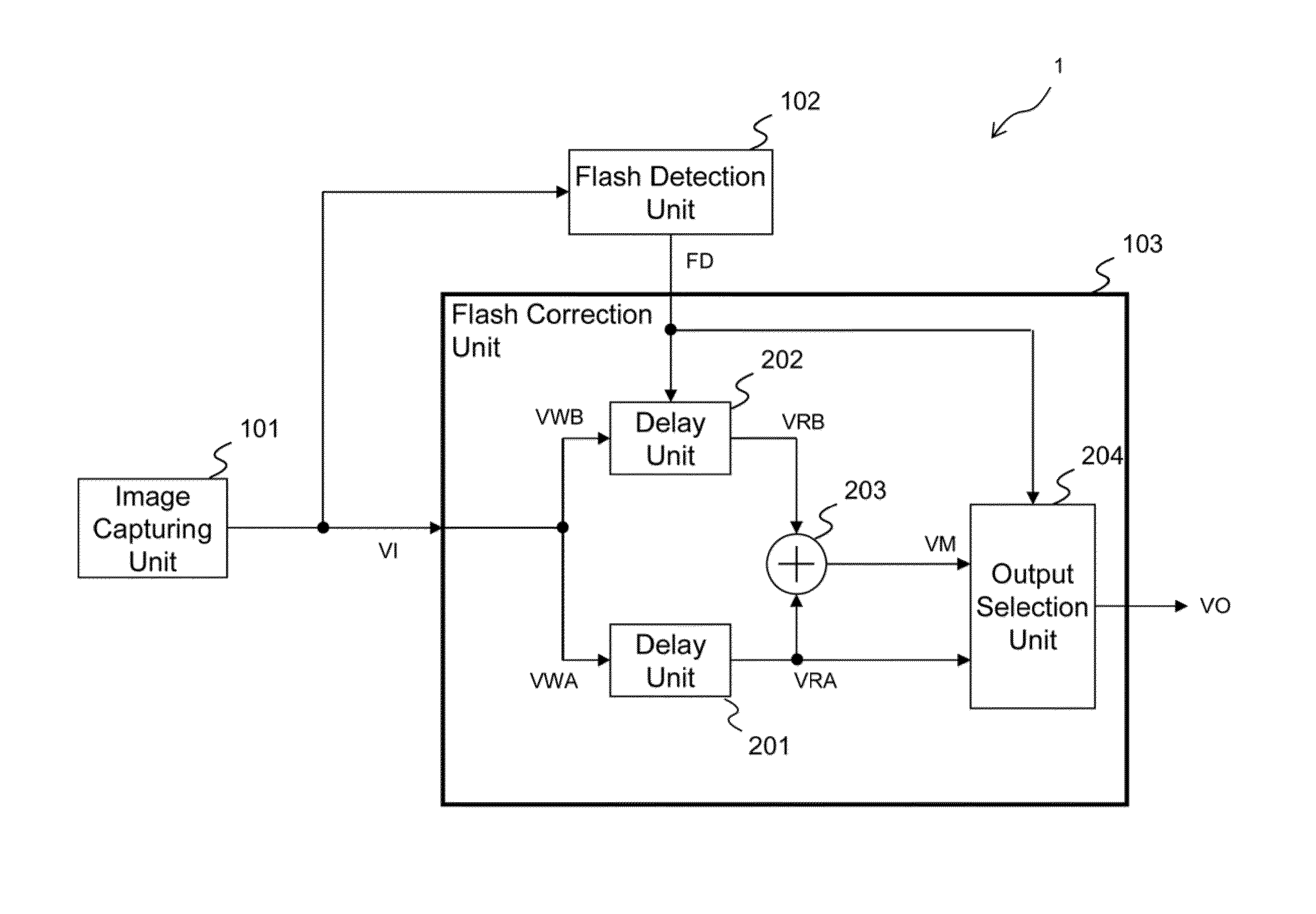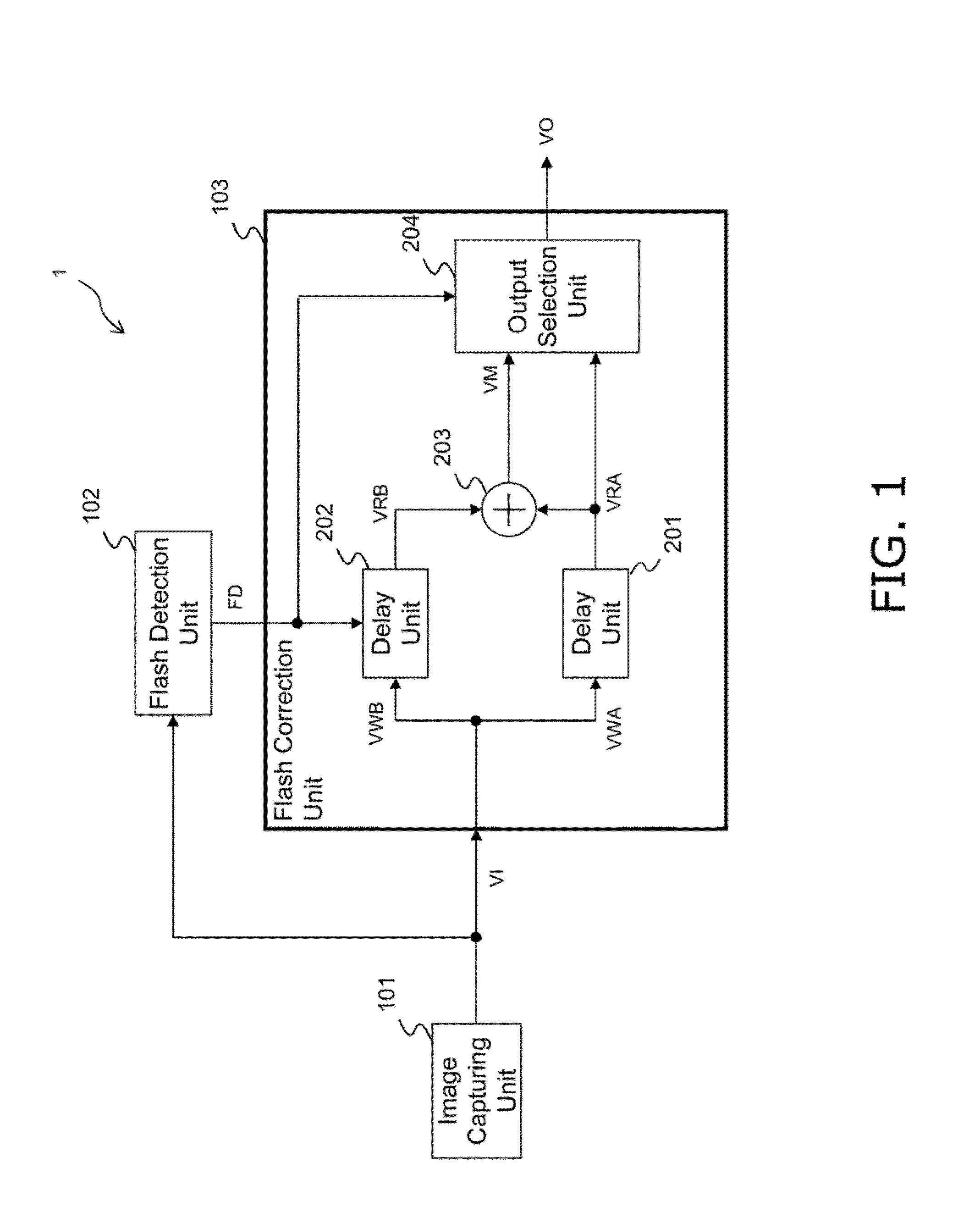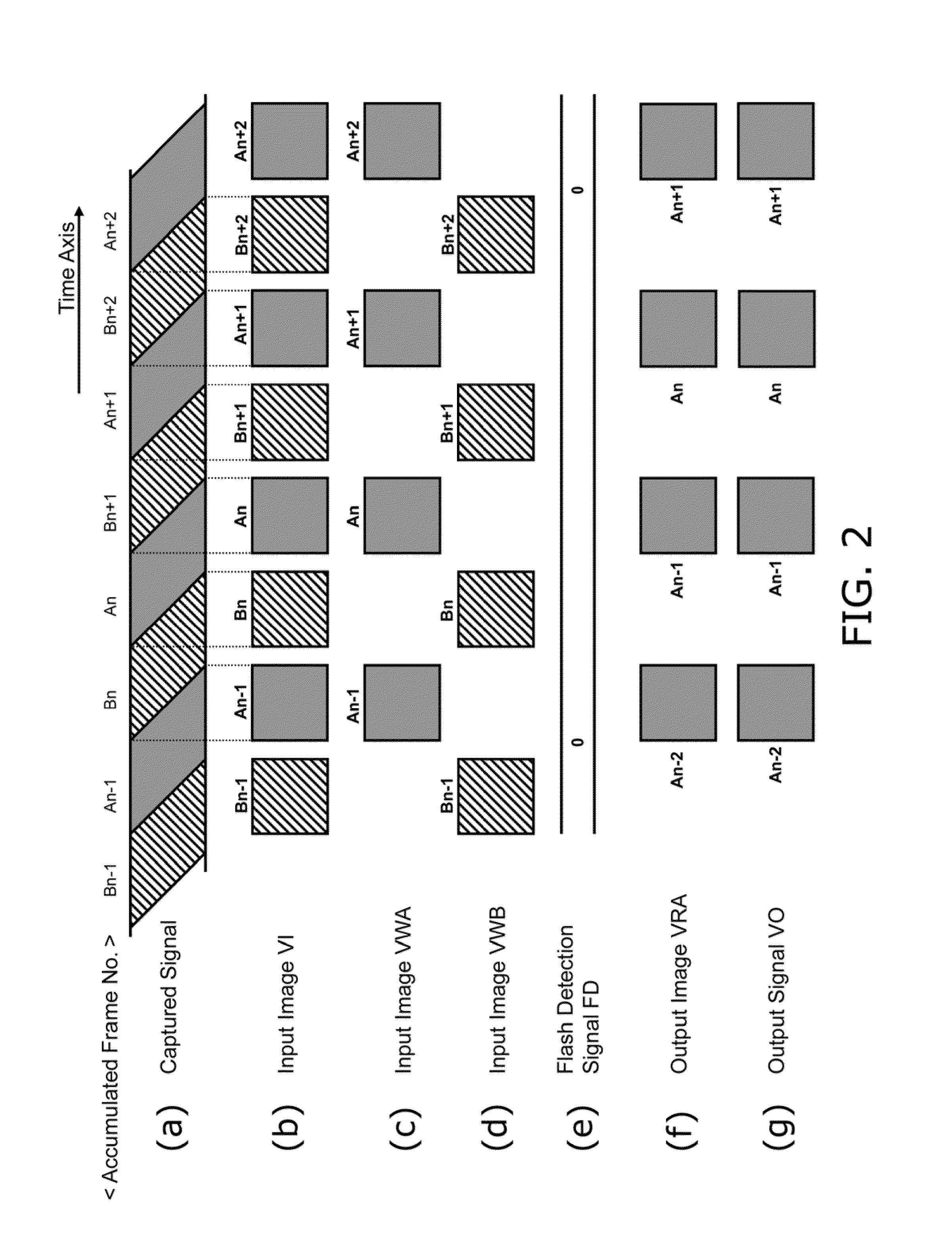Imaging apparatus, external flash correction method, recording medium, and integrated circuit
a technology of external flash and imaging apparatus, applied in the field of imaging apparatus, can solve the problems of white band interference, cmos image sensor, timing of accumulation period for respective pixels to shift,
- Summary
- Abstract
- Description
- Claims
- Application Information
AI Technical Summary
Benefits of technology
Problems solved by technology
Method used
Image
Examples
first embodiment
[0075]In the first embodiment, a case in which an imaging apparatus executes processing using an electronic shutter function will be described. Furthermore, in the present embodiment, the descriptions will be given assuming that the exposure time for a single frame (that is, the accumulation time of a signal charge) is approximately equal to ½ of the signal readout cycle determined by the imaging frame rate (that is, a single frame interval). For example, in the case where the imaging frame rate is 24 frames per second and both one frame interval and the signal readout cycle are 1 / 24 second, the exposure time is 1 / 48 second. Finally, the signal charge readout period is assumed to be 1 / 60 second.
[0076]
[0077]FIG. 1 is a diagram illustrating the overall configuration of an imaging apparatus 1 according to the present embodiment.
[0078]As shown in FIG. 1, the imaging apparatus 1 includes an image capturing unit 101, a flash detection unit 102, and a flash correction unit 103. The flash c...
second embodiment
[0147]As in the first embodiment, in the second embodiment, the descriptions will be given assuming that the exposure time for a single frame (that is, the accumulation time of a signal charge) is approximately equal to ½ of the signal readout cycle determined by the imaging frame rate (that is, a single frame interval). For example, in the case where the imaging frame rate is 24 frames per second and both one frame interval and the signal readout cycle are 1 / 24 second, the exposure time is 1 / 48 second. Note, however, that unlike the first embodiment, the signal charge readout period is assumed to be 1 / 120 second.
[0148]Furthermore, in the present embodiment, elements that are identical to those of the first embodiment are assigned the same reference numerals, and detailed descriptions thereof will be omitted.
[0149]
[0150]FIG. 5 is a diagram illustrating the overall configuration of an imaging apparatus 2 according to the present embodiment.
[0151]As shown in FIG. 5, the imaging appara...
PUM
 Login to View More
Login to View More Abstract
Description
Claims
Application Information
 Login to View More
Login to View More - R&D
- Intellectual Property
- Life Sciences
- Materials
- Tech Scout
- Unparalleled Data Quality
- Higher Quality Content
- 60% Fewer Hallucinations
Browse by: Latest US Patents, China's latest patents, Technical Efficacy Thesaurus, Application Domain, Technology Topic, Popular Technical Reports.
© 2025 PatSnap. All rights reserved.Legal|Privacy policy|Modern Slavery Act Transparency Statement|Sitemap|About US| Contact US: help@patsnap.com



